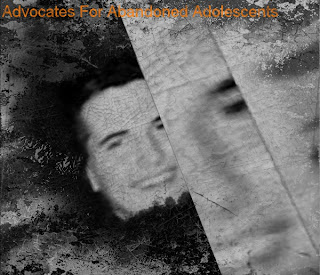Only the U.S. and Somalia sentence teenagers to life without parole. Adam Serwer tells the heartbreaking stories of kids who kill their abusers. Inside the heartbreaking stories of kids who kill the adults who abuse them.
At 16, Sarah Kruzan was sentenced to life without parole for killing her pimp, “G.G.” Despite the fact that G.G. had abused Sarah since the age of 13, when he put her on the street and made her work 12-hour shifts as a prostitute, the judge in her case decided the nature of the crime was so heinous that she was, essentially, irredeemable. A widely circulated YouTube video of Kruzan, now 29, discussing her crime suggests the opposite. “I definitely know I deserve punishment—I mean, you don’t just take somebody’s life and think that it’s OK,” Kruzan says. “So, yes, definitely, I deserve punishment.”
In 1992, 15-year-old Jacob Ind murdered his mother and stepfather while they lay in bed. His stepfather, Kermode, had sexually abused Jacob and his brother, Charles. Their mother offered no refuge—she would tell Jacob that she “hated him” and “wished he had never been born.” Years later, Ind told a local Colorado news station that he killed his parents because “I was too weak to directly confront them…My act was of pure selfishness. It was the coward’s way out.”
The examples of Sarah Kruzan and Jacob Ind, both of which involve brutal killings committed by abused and frightened children who are now remorseful adults, suggest that juveniles who commit heinous crimes are capable of being rehabilitated.
The practice of tossing juveniles in prison for life without the possibility of parole began during America’s great crime panic. Gripped by an irrational fear of what political scientist John DiIulio termed a generation of juvenile “super-predators,” in the mid-1990s legislators at the state and federal level acted to ensure these “super-predators” would be treated like the monsters the public believed they were. The result is a gruesome footnote to the story of America’s love affair with mass incarceration: an estimated 2,570 juveniles serving life without parole in a nation that already imprisons more of its population—1 percent, or nearly 2.5 million people—than any other country.
News stories about juveniles serving life without parole often focus on suburban white children, such as Ind or Brandon Hein, the subject of a 2003 investigation by Dan Rather. But the racial disparities already apparent in the criminal-justice system are replicated among juvenile lifers. According to a 2005 report from Human Rights Watch, black youth receive life without parole at a rate about 10 times greater than the rate of white youth.
On Monday the Supreme Court will consider whether juvenile life without parole violates the Eighth Amendment prohibition against “cruel and unusual punishment” in the context of two specific cases. Joe Sullivan was convicted, along with two accomplices, of robbing and raping a 72-year-old woman when Sullivan was 13 years old. Terrance Jamar Graham was convicted of armed burglary at the age of 17, and then sentenced to life without parole after he violated the terms of his probation.
The decision will ultimately hinge on two factors—the nation’s falling out of love with an excessively punitive criminal-justice system, and the same scientific research on which the court based its 2005 decision in Roper v. Simmons, in which the justices ruled it unconstitutional to execute juveniles. Back then, Justice Anthony Kennedy, still the Supreme Court’s all-important swing vote, was persuaded by research that showed teenage brains are less capable than adult brains of evaluating decisions and that adolescents’ “characters” are not “fully formed.”
That seems to be stating the obvious. The research in the Roper decision already undercuts the premise under which juvenile life without parole is justified—the presumption that convicted young people are simply monsters in training who cannot be rehabilitated, and that harsh sentencing will act as a deterrent. The examples of Kruzan and Ind, both of which involve brutal killings committed by abused and frightened children who are now remorseful adults, suggest an equally obvious conclusion: that juveniles who commit heinous crimes are capable of being rehabilitated.
But while most adult offenders were once youth offenders, most youth offenders, even those who commit serious crimes, do not become adult offenders. What’s more, Human Rights Watch estimates that more than a quarter of juveniles sentenced to life without parole are sentenced through the felony murder rule, in which a group of people committing a crime such as theft are all held responsible for the murder committed by one member of the group, even if the killing was not premeditated.
Despite the notion that judges are supposed to be impartial robots, the Supreme Court has always been sensitive to the tide of public opinion, and when it comes to excessive punishment, that tide is turning. Some states, including Alaska, Colorado, Kansas, Kentucky, New Mexico, Oregon, and Washington, D.C., forbid sentencing juveniles to life without parole. The father of “tough on crime,” James Q. Wilson, has recently written of mass incarceration, “No one can be happy with this state of affairs.” Internationally, the U.S. and Somalia keep each other company as the only two countries that have failed to sign the United Nations convention on the Rights of the Child, which explicitly forbids “life imprisonment without possibility of release” for “offenses committed by persons below 18 years of age.”
It’s time for the international moral embarrassment of juvenile life without parole to end.
Comment
© 2025 Created by Lucinda F. Boyd.
Powered by
![]()



You need to be a member of THE STREETS DON'T LOVE YOU BACK to add comments!
Join THE STREETS DON'T LOVE YOU BACK